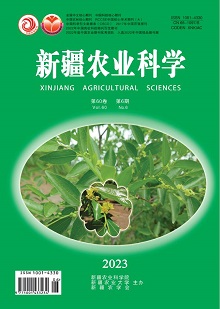【Objective】 To investigate the adaptive biology of endemic fishes in the Tarim River system, to assess the organismal resilience of juvenile Aspiorhynchus laticeps (Day), and to investigate their mechanisms of endangerment.【Methods】 Based on the laboratory ecological methods, we carried out the analysis of salinity tolerance and behavioral observation of juvenile fish. 【Results】 Under the conditions of pH (7.78±0.09) and temperature (21±1)℃, the juvenile fish in the control group had no obvious stress reaction, showing calm activity, normal respiration, normal response to external stimuli (light, sound, etc.), and no dead individuals were found. The juvenile fish in the experimental group were overstressed by the initial contact with the experimental water, and swam impatiently, struggled and flung, and then died as the salinity concentration gradient increased, and the behavioral characteristics under the alkalinity concentration gradient were similar to those of the salinity experiment. The salinity half-lethal concentrations (LC50) of sodium chloride (NaCl) were 14.302,1, 13.721,4, 13.614,4, 13.533,2 g/L and the safe concentration (SC) was 3.789,1 g/L for juvenile Aspiorhynchus laticeps (Day) at 24, 48, 72 and 96 h, respectively; the alkalinity half-lethal concentrations (LC50) of sodium bicarbonate (NaHCO3) were 51.856,1, 39.502,5, 32.951,5, 31.777,9 mmol/L, and the safe concentration (SC) was 11.850,8 mmol/L, respectively.【Conclusion】 The safe concentrations (SC) of juvenile Aspiorhynchus laticeps (Day) under saline stress are 3.789,1 g/L, 11.850,8 mmol/L, compared with the environmental physicochemical indicators of the former habitat water, the salinity of the fish is more stressful, and the continuous increase of salinity in the habitat water greatly affect its ecological position and habitat selection or even cause it to be endangered. This study provides a reference for the fry breeding and domestication of Aspiorhynchus laticeps (Day), and lays a basis for further development and conservation of germplasm resources development and utilization and consolidates the endemic aquatic species industry in Xinjiang.

